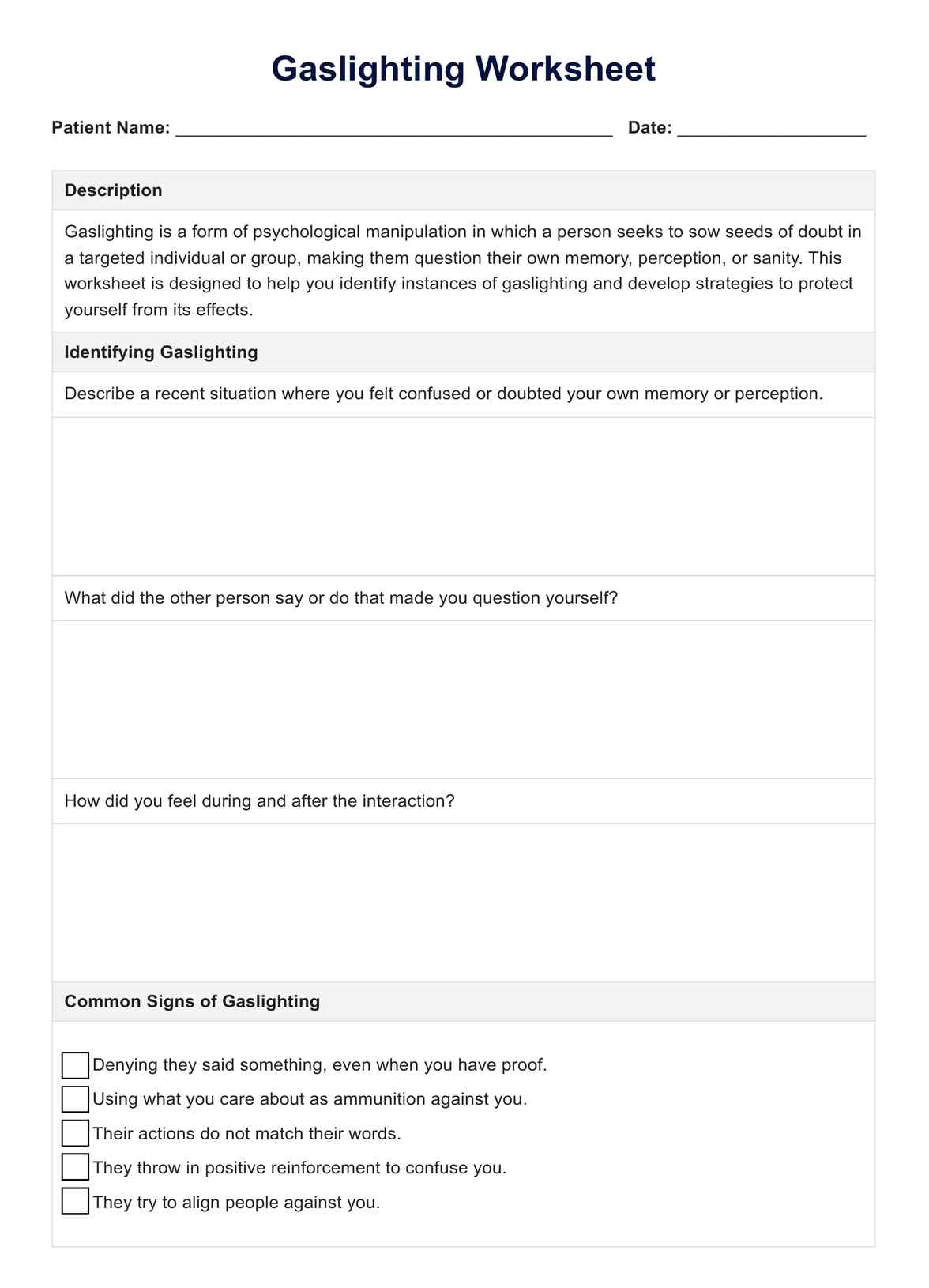Gaslighting serves the purpose of exerting control and power over the victim by making them doubt their reality, thereby increasing the manipulator's dominance and influence in the relationship.

Gaslighting Worksheet
Use our Gaslighting Worksheet to empower your clients. Help patients recognize and overcome gaslighting, facilitate healing, and improve mental wellness.
Use Template
Gaslighting Worksheet Template
Commonly asked questions
Gaslighting manipulates the victim by causing them to question their memory, perception, and sanity, leading to confusion, loss of confidence, and a reliance on the gaslighter for validation.
Gaslighting can be highly effective in manipulating the victim's thoughts and emotions, often resulting in a significant impact on their mental health and well-being if not addressed.
EHR and practice management software
Get started for free
*No credit card required
Free
$0/usd
Unlimited clients
Telehealth
1GB of storage
Client portal text
Automated billing and online payments











